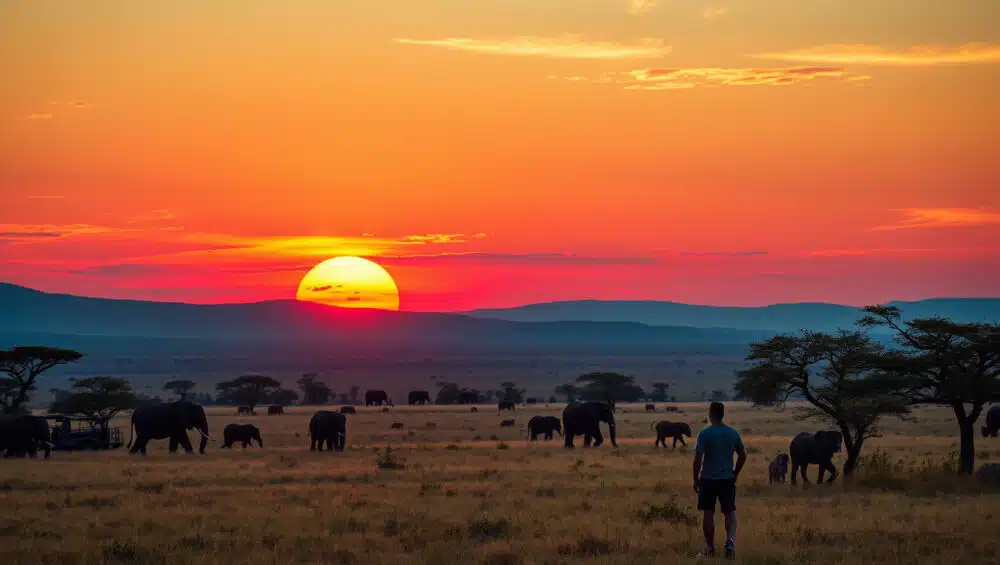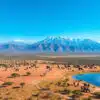Planning a safari in Tanzania is an exhilarating experience that promises adventure, breathtaking landscapes, and unforgettable wildlife encounters. For first-timers embarking on this journey, it can feel overwhelming to navigate the many logistics of such a trip. However, with the right guidance, you can ensure your safari adventure is both memorable and enjoyable. In this comprehensive guide, we will delve into essential tips including the best times to visit, different types of safaris available, what to pack, choosing accommodations, safety tips for travelers, and crucial cultural etiquettes to keep in mind. Whether you’re aiming to witness the Great Migration or explore the serenity of the Serengeti, this guide serves as your primer to a successful safari in Tanzania.
Key Takeaways
- The best time for a Tanzania safari is typically during the dry season from June to October.
- Choose between different safari types, such as game drives, walking safaris, or luxury lodges depending on your preferences.
- Pack essentials like lightweight clothing, binoculars, and sun protection for an enjoyable safari experience.
- Research accommodation options in advance to find the best fit for your budget and comfort level.
- Familiarize yourself with local cultural etiquette to show respect for Tanzanian traditions and communities.
Understanding the Best Time to Go
When embarking on your thrilling adventure through the wild landscapes of Tanzania, understanding the best time to go is crucial for a memorable experience. A first-timer’s guide to planning a safari in Tanzania should always start by considering the seasons, as they directly impact wildlife visibility and the overall safari experience. The dry season, from June to October, is widely regarded as the prime time for safari-goers. During these months, animals gather around water sources, making them easier to spot. However, visiting during the wet season, from November to May, has its own allure. Lush landscapes and fewer crowds create a serene atmosphere, coupled with unique opportunities for bird watching and witnessing the dramatic calving season in Ngorongoro Crater. Ultimately, choosing the best time for your safari will depend on your wildlife interests and personal preferences, making this critical element a key focus of your planning.
Choosing the Right Safari Type
When it comes to planning a safari in Tanzania, choosing the right type is crucial for maximizing your experience. A First-Timer’s Guide to Planning a Safari in Tanzania highlights the various safari options available, from game drives to walking safaris and even balloon safaris. Each type offers a unique way to immerse yourself in the breathtaking landscapes and incredible wildlife that Tanzania is famous for. For those seeking adventure, a walking safari allows you to connect with nature on a more intimate level, while a game drive provides a comfortable way to spot the Big Five from the comfort of your vehicle. Additionally, for a truly unforgettable experience, consider a hot air balloon safari at dawn—gliding over the Serengeti as the sun rises is simply magical. Understanding the different types enables you to choose the one that aligns with your adventure style, ensuring your Tanzanian safari is both memorable and tailored to your desires.
‘The journey of a thousand miles begins with one step.’ – Lao Tzu
What to Pack for Your Safari Adventure
When preparing for an extraordinary trip to Tanzania, packing effectively can significantly enhance your safari experience. A First-Timer’s Guide to Planning a Safari in Tanzania emphasizes the necessity of strategic packing to ensure comfort and readiness for the unexpected. Start with clothes that offer both comfort and protection from the sun and insects; lightweight, breathable fabrics are ideal, along with long sleeves and sturdy trousers. Don’t forget a good pair of binoculars for wildlife spotting and a high-factor sunscreen to shield against the intense African sun. A wide-brimmed hat will not only keep you cool but will also help protect your face and neck from harmful UV rays. Essential items such as a camera with extra batteries, bug repellent, and a reusable water bottle will undoubtedly enhance your journey. Moreover, always include a small first-aid kit for minor emergencies, as well as any personal medications you may need. By preparing thoughtfully, you’ll be equipped to savor the breathtaking landscapes and incredible wildlife encounters that Tanzania’s safari has to offer.
Navigating Accommodation Options
When it comes to planning your dream wildlife adventure, navigating accommodation options is a crucial aspect of a first-timer’s guide to planning a safari in Tanzania. With an array of choices ranging from luxury lodges to budget-friendly camps, it’s essential to select the right option that fits your needs and enhances your safari experience. For those seeking comfort, high-end lodges such as those in the Serengeti offer stunning views and tailored services that can make your stay unforgettable. Conversely, if you’re on a budget, consider staying at a camp that provides an authentic experience while still allowing you to immerse yourself in the breathtaking wilderness. Additionally, check for accommodations that offer amenities like guided tours, local cuisine, and proximity to notable parks. By carefully evaluating your accommodation choices, you can ensure a more enriching safari adventure that aligns with your expectations.
 Tanzania is undoubtedly an adventure of a lifetime, but safety should be at the forefront of every traveler’s mind as they plan their journey. As highlighted in ‘A First-Timer’s Guide to Planning a Safari in Tanzania,’ proper precautions can ensure a thrilling yet secure experience. First and foremost, always choose a reputable safari operator, as they are well-versed in the local wildlife and terrain. Familiarize yourself with the behavior of animals you might encounter; understanding how to act in their presence can greatly reduce risks. Additionally, it’s important to stay inside your vehicle during game drives, as this is crucial for maintaining safety while observing wildlife. Don’t forget to invest in quality gear, such as sturdy hiking boots and protective clothing against insects, to enhance your safety while exploring the magnificent landscapes. Lastly, stay informed about the weather and local regulations, as conditions can change rapidly. Remember that while a safari can be thrilling, following these safety tips will ensure it is as enjoyable as it is unforgettable.
Tanzania is undoubtedly an adventure of a lifetime, but safety should be at the forefront of every traveler’s mind as they plan their journey. As highlighted in ‘A First-Timer’s Guide to Planning a Safari in Tanzania,’ proper precautions can ensure a thrilling yet secure experience. First and foremost, always choose a reputable safari operator, as they are well-versed in the local wildlife and terrain. Familiarize yourself with the behavior of animals you might encounter; understanding how to act in their presence can greatly reduce risks. Additionally, it’s important to stay inside your vehicle during game drives, as this is crucial for maintaining safety while observing wildlife. Don’t forget to invest in quality gear, such as sturdy hiking boots and protective clothing against insects, to enhance your safety while exploring the magnificent landscapes. Lastly, stay informed about the weather and local regulations, as conditions can change rapidly. Remember that while a safari can be thrilling, following these safety tips will ensure it is as enjoyable as it is unforgettable.
Cultural Etiquette to Respect
When planning a safari in Tanzania, acknowledging and respecting local cultural etiquette is essential for a rewarding experience. Tanzania is home to over 120 ethnic groups, each with unique customs and traditions. As a first-timer, familiarize yourself with basic greetings such as ‘Jambo’ (hello) and understand the importance of greeting elders first, as this demonstrates respect. Additionally, when visiting villages or local communities, ask for permission before taking photographs of people, as they may not be comfortable being photographed. It’s also advisable to dress modestly, especially in rural areas, to show respect for their cultural norms. Being open-minded and willing to learn about the diverse cultures you encounter will enrich your journey as you navigate through the breathtaking landscapes and wildlife that make Tanzania a premier destination for safari adventure.





